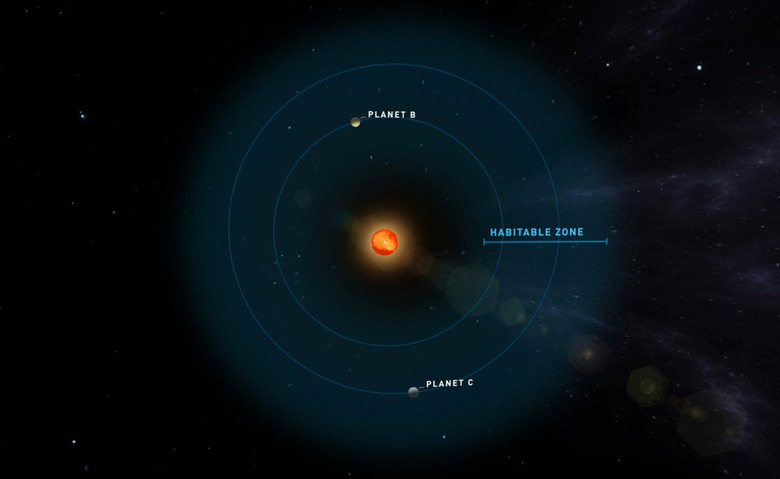Two Earth-Like Planets Found In Small, Warm Star's Habitable Zone
The University of Göttingen has announced the discovery of two new exoplanets near the M-type red dwarf known as Teegarden's Star. The discovery was made by a team of international researchers, according to the German university that led the effort. Both Earth-like planets are described as slightly heavier than our own planet, and they're both located within the star's habitable zone.
The two new exoplanets, which are merely listed as Planet B and Planet C, are within the temperature zone where liquid water can exist, according to the researchers, making them both potential destinations where life may be found. These exoplanets may be part of an overall larger system.

Teegarden's Star is 10 times lighter than the Sun with an estimated temperature around 2700C; it has the distinction of being one of our nearest neighboring stars, plus it's one of the smallest known stars. The discovery was made possible by the Carmenes project, which is dedicated to seeking exoplanets located near small, relatively cool stars like Teegarden's Star.
In describing the planets, the study's lead author Mathias Zechmeister explained, 'The two planets resemble the inner planets of our solar system.' Teegarden's Star and its nearby planets are located around 12.5 light-years from Earth, meaning anyone who inhabited one of those planets could observe Earth's existence using the transit detection method — that is, spotting Earth's presence when it passes in front of the Sun.
The exoplanets' presence in the Teegarden's Star's habitable zone is exciting due to the potential for life to exist on these planets. However, and as with many other previously discovered Earth-like planets, there's no way to know for sure whether either destination contains life.
